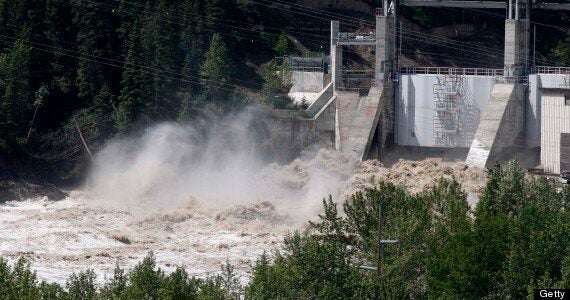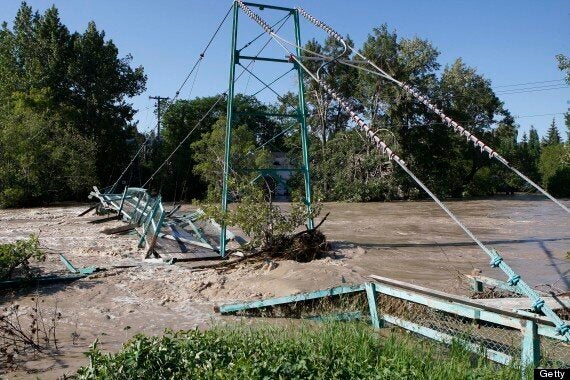On Thursday 20 June, an intense downpour of rain caused water levels in the Canadian province of Alberta to soar beyond manageable levels.
The four inches that fell followed nearly two weeks of torrential rain in which swollen rivers and masses of standing water frayed the nerves of hundreds of thousands of residents, and leading to a state of emergency with many forced to leave their homes.

Rivers burst their banks under the strain of the downpours
But it was Thursday’s rain that caused the most severe damage, with 75,000 people having been urged to desert their homes in search for safety.
Furthermore, the Royal Canadian Mounted Police have confirmed the deaths of at least three people, whose remains have been found. A fourth death has also been reported.
For those who survived, there were limited options of where to go. The Red Cross has been sending volunteers to makeshift shelters outside the areas hardest hit. For others, the homes of friends or family provided a safe haven from the water.

Damage to infrastructure, like this bridge, was extensive
The response to the emergency has been swift and comprehensive, with more than 2,000 Canadian Forces troops assisting in tasks like emergency evacuations. On top of this, a sizeable monetary package of $1 billion has been promised by the Alberta government , while the federal government in Ottawa says it is too early to come up with a figure regarding the quantity of financial aid needed.
However, with floodwaters generally receding, around 65,000 residents have been granted access to return to their homes. What they are being greeted with is undoubtedly a shocking sight.
So how do you restart your life after such a tragedy?
The prospect of returning home must be a daunting one. Damage to a house is often more deep-rooted than it may at first seem such as the long-lasting effects of damp. Homeowners face the prospect of replacing entire sections of their houses in order to avoid the recurring problem of moisture in the walls.

Structural failures can be superficial, further damage could lie underneath
Additionally, consider the incredible financial burden of having to replace almost every appliance in the home as a result of irreversible electrical damage.
With such pressing concerns facing returning Albertan residents, the government’s pledge to give every adult a sum of $1,250, with an extra $500 for every child, can surely only go so far before the flood’s victims are back in effective financial ruin.
The situation looks even more grave when you consider Alberta premier Alison Redford’s comments regarding the clean up and recovery
“When we talk about what’s going to happen, we’re talking about a 10-year plan,” she said.
However, if there’s one thing you can praise the people of North America for, it’s resilience in the face of tragedy.
Immediately following the bombings in Boston, hospitals began tweeting pleas for people to refrain from giving blood, because the amount of donations had exceeded hospital limits.
Signs of the same have already been seen in Canada. When a plea by Calgary Mayor Naheed Nenshi for help was answered by 2,000 people instead of the 50 he had anticipated, some had to be turned away from immediate volunteering duties. Instead, they put their names down to help in the following weeks.

Voluntary efforts were swift. Here, a Canadian Forces member helps clear debris
When faced with such overwhelming enthusiasm, it is difficult to see tragedy prevailing. Recovery may take a long one, but the residents of Alberta have demonstrated they are already on that path.